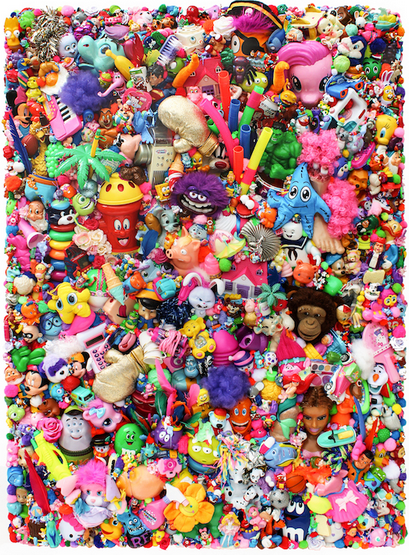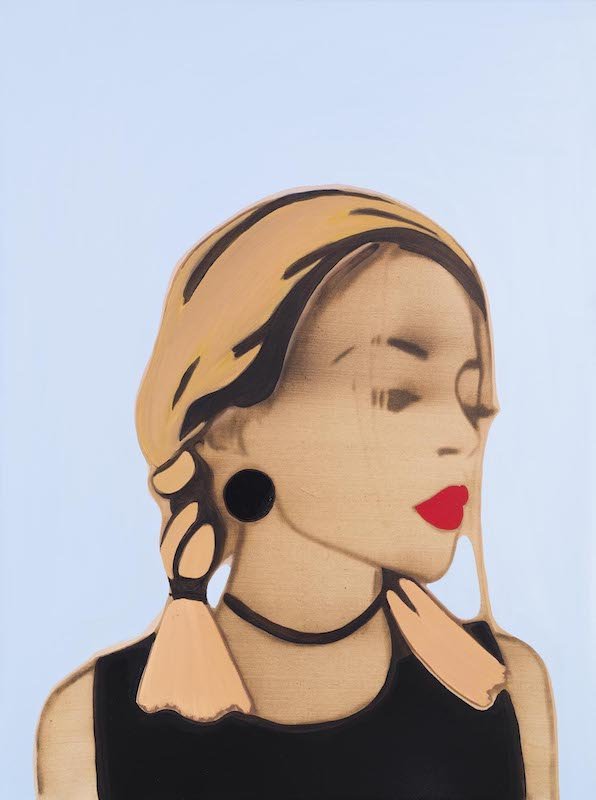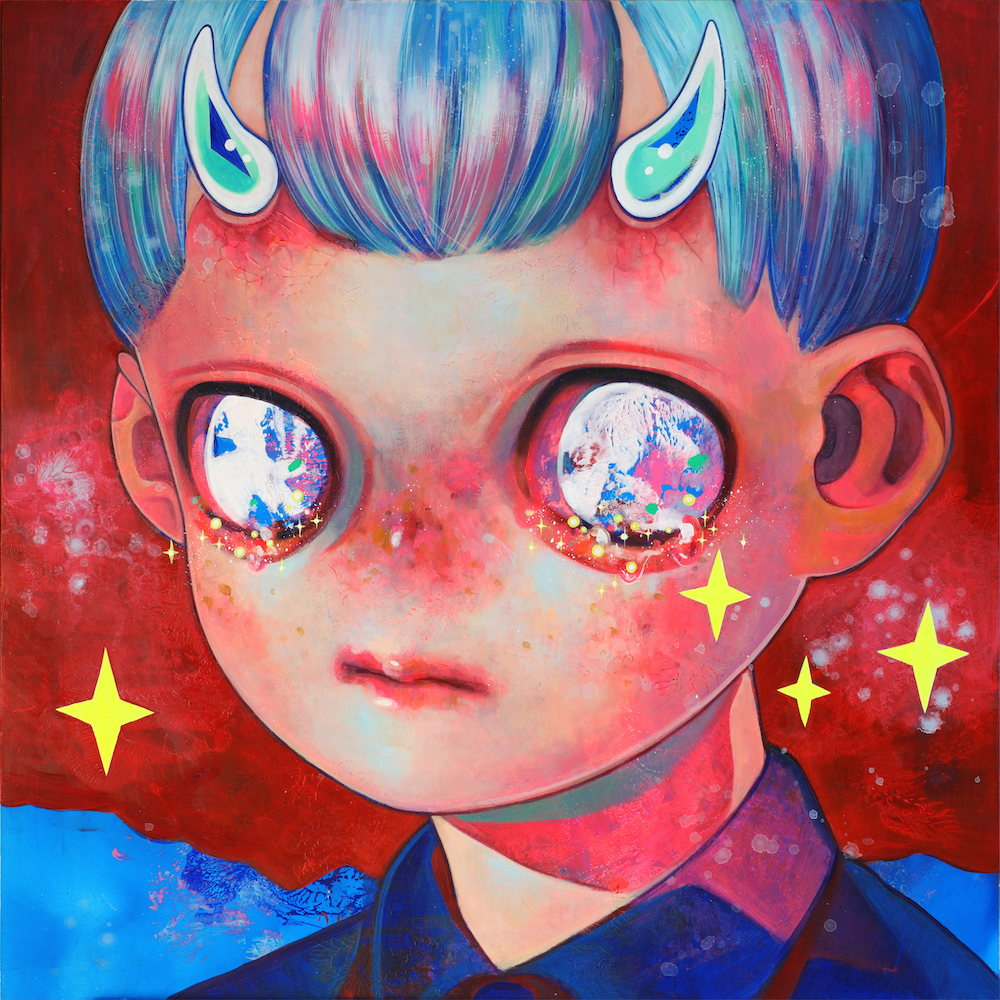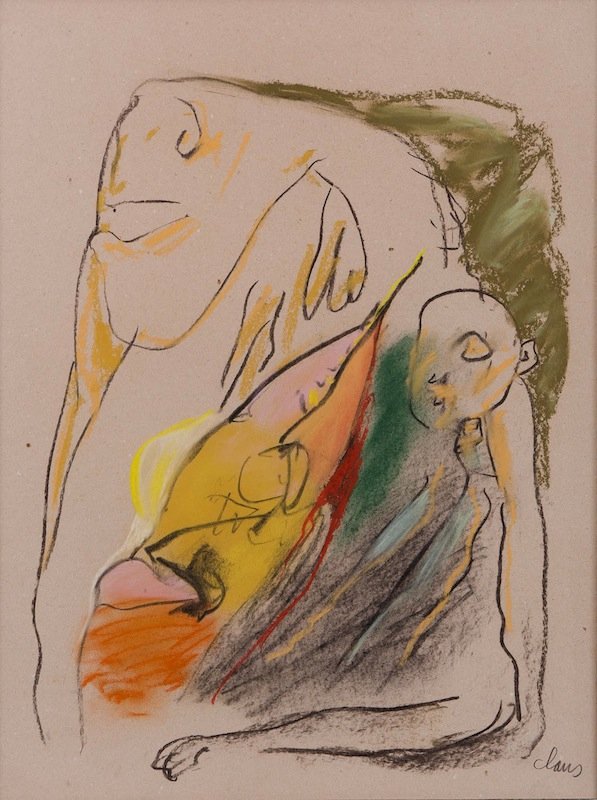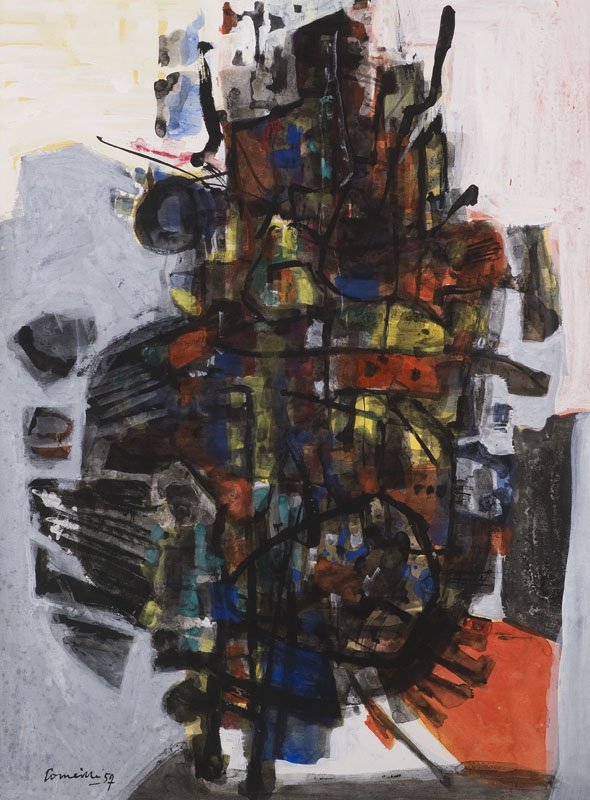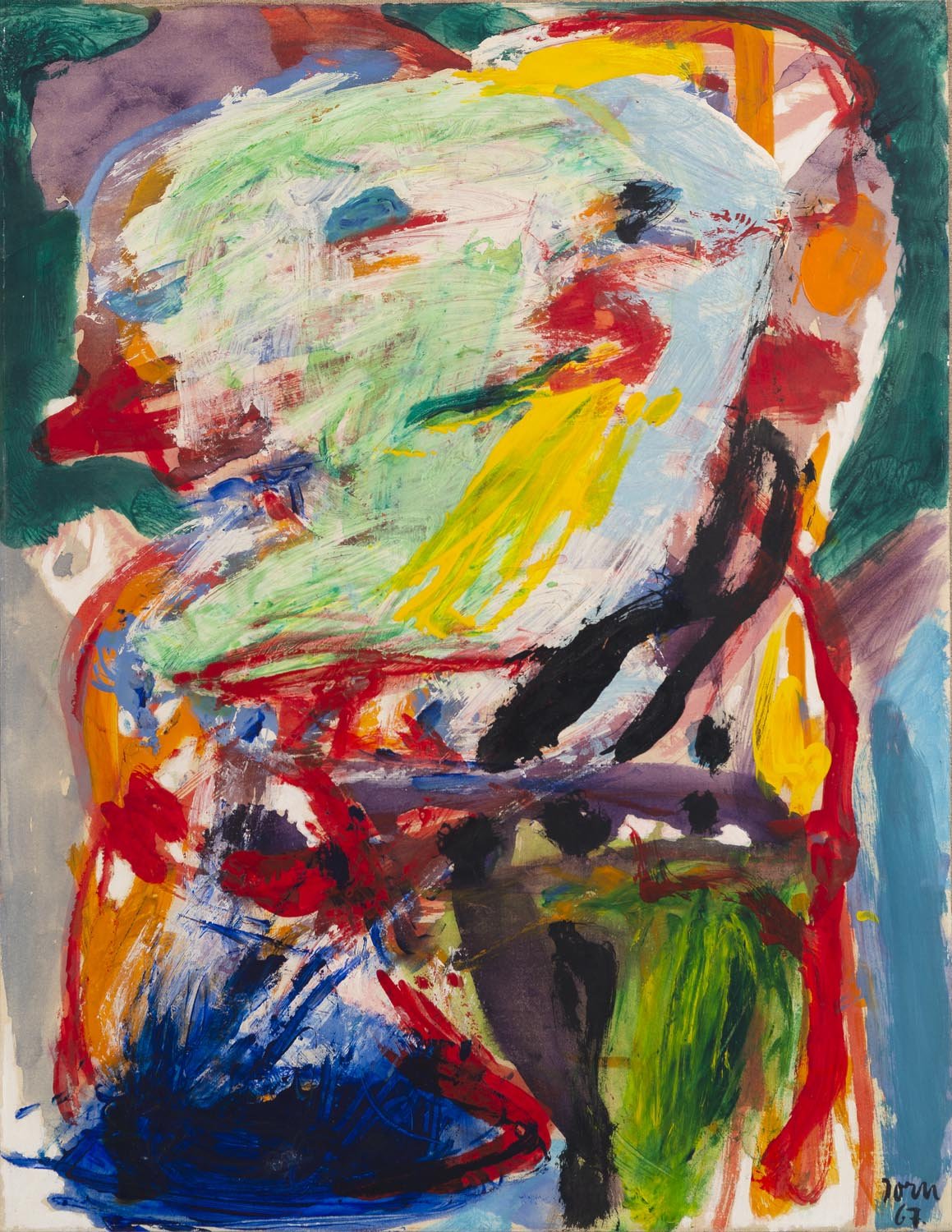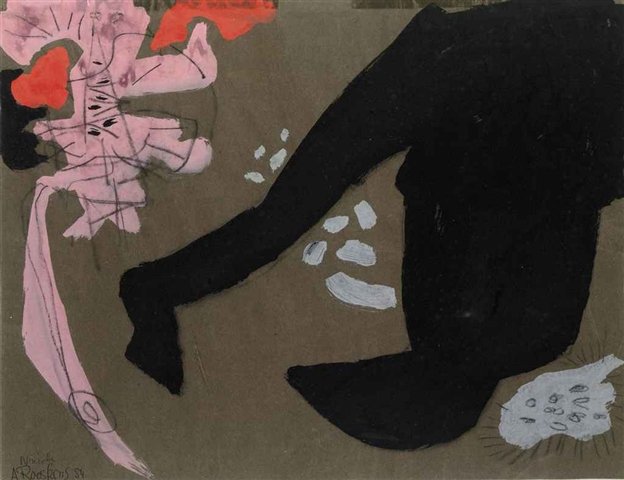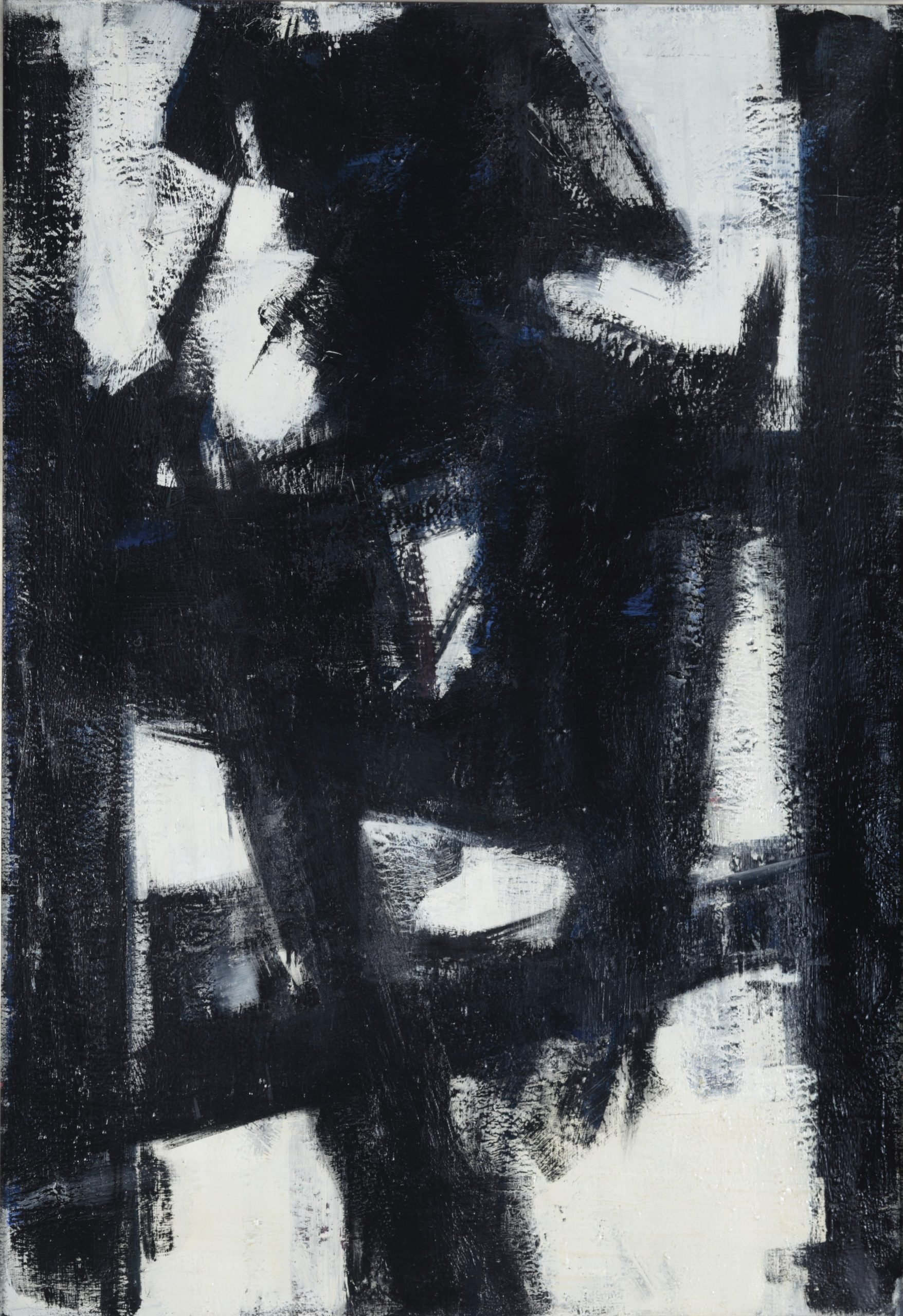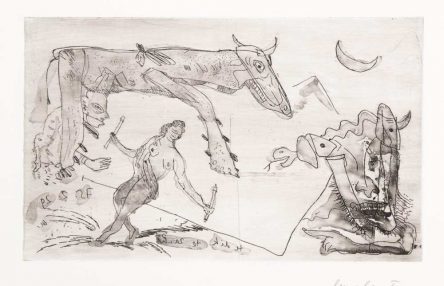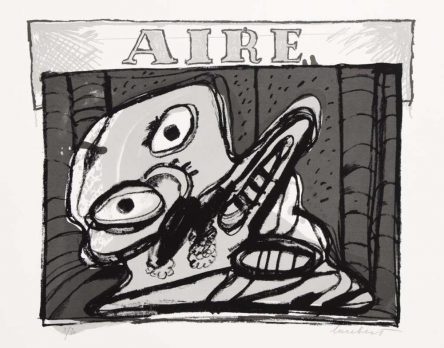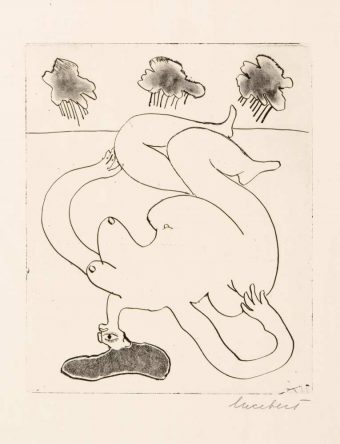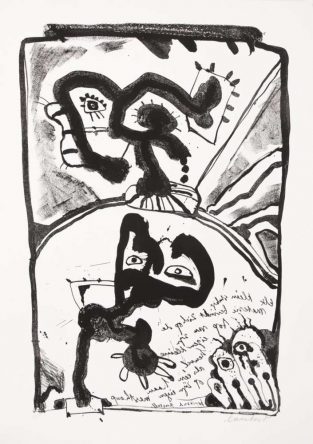Lucebert, whose real name was Lubertus Jacobus Swaanswijk, was — and still is — a well- known painter and poet. He began his studies at Amsterdam’s Kunstnijverheidsschool in 1938, leaving after just 18 months but continuing to produce drawings and paintings.
His poetic work was discovered by Gerrit Kouwenaar in 1948. Lucebert became a member of the Dutch Experimental Group and, later, CoBrA. Shortly after taking part in the 1949 CoBrA exhibition in Amsterdam with his poems, Lucebert left the movement.
Although his involvement in CoBrA was only brief and tangential, it was nevertheless of fundamental importance to him as an artist-poet. CoBrA encouraged him and other experimental poets (including Vinkenoog, Kouwenaar, Elburg and Schierbeek) to commit themselves fully to the freedom of language they had hitherto only hesitantly explored. At the same time the movement also impacted on Lucebert’s work as a painter.
During the Fifties Lucebert was subject to many influences, and in this period he concentrated mainly on painting. The myths that he created in his expressionist paintings and his poems were rooted in the human world and full of literary allusions. In the Sixties he became particularly interested in the child-like CoBrA style, but this quickly gave way to a caricaturesque, demonic vision of the world, which he continued to express until his death in 1994.








